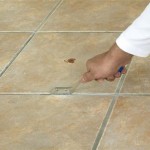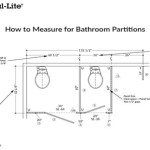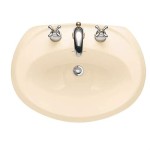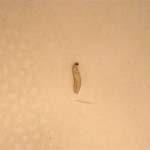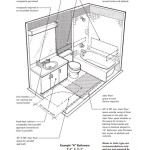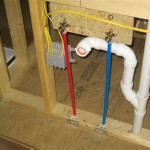How to Treat Mold in Bathroom Ceiling
Mold growth in a bathroom ceiling is a common problem, often caused by excessive moisture and humidity. This can lead to an unpleasant odor, health issues, and structural damage. Effective treatment involves addressing the source of moisture, removing the mold, and preventing future growth. This article discusses the steps to take for successful mold treatment in your bathroom ceiling.
Identify the Source of Moisture
Before tackling the mold, it's crucial to understand its source. Identifying the root cause is essential to prevent recurring mold growth. Common causes of moisture in bathroom ceilings include: *
Leaky pipes:
Check for leaks in the plumbing fixtures above the ceiling, such as the showerhead, faucet, or pipes. *Poor ventilation:
Inadequate ventilation allows moisture to linger, creating a favorable environment for mold. Ensure the bathroom has a functioning exhaust fan and that it's used during and after showers. *Condensation:
Warm air laden with moisture from hot showers can condense on cold surfaces, like the bathroom ceiling, leading to mold growth. This is more common in poorly-ventilated bathrooms. *Roof leaks:
Check the roof for leaks, especially if the mold problem coincides with recent rainfall. *Water damage:
If the bathroom has recently sustained water damage, the ceiling may be affected.Removing Mold from the Bathroom Ceiling
Once the source of moisture is addressed, you can move on to removing the mold. This should be done carefully to avoid spreading spores and exposing yourself to potential health risks. *
Safety Precautions:
* Wear protective gear, including a NIOSH-approved N95 respirator, goggles, gloves, and long-sleeved clothing. * Open windows for ventilation during and after the cleaning process. * Prevent children and pets from entering the area while cleaning. *Cleaning Solution:
* Prepare a cleaning solution by mixing one cup of bleach with one gallon of water. This solution is effective against most mold types. * Alternatively, use a commercially available mold and mildew cleaner. *Cleaning Procedure:
* Apply the cleaning solution to the affected area using a spray bottle or sponge. * Allow the solution to sit for 10-15 minutes. * Scrub the mold-affected area using a stiff-bristled brush. * Rinse the area thoroughly with clean water. * Dry the ceiling completely with a dry cloth or towel.Preventing Future Mold Growth
After successfully removing the mold, it is essential to take measures to prevent its recurrence. This involves addressing the root cause of moisture and implementing ongoing maintenance practices. *
Repair Leaks:
Immediately address any leaks, whether it's a leaky pipe, faucet, or a damaged roof. *Maintain Ventilation:
Ensure the bathroom exhaust fan is functional and used during and after showers. Consider installing a fan with a timer for continuous ventilation. *Reduce Humidity:
Control humidity levels by using a dehumidifier or by increasing ventilation. *Regular Cleaning:
Clean the bathroom regularly, paying attention to areas prone to mold growth, such as the ceiling, grout, and shower walls. *Inspect Regularly:
Regularly inspect the bathroom ceiling for signs of mold growth. Early detection allows for prompt action and prevents the issue from escalating.While mold treatment is relatively straightforward, dealing with significant mold infestations or situations beyond your expertise might require the assistance of a professional mold remediation specialist. Professionals have the training, equipment, and knowledge to safely and effectively address complex mold problems.

Bathroom Ceiling Mold Removal When To Clean Call Branch Environmental

Cleaning Mold From Bathroom Ceilings Like A Pro Lovetoknow

How To Remove Black Mold From A Bathroom Ceiling

Cleaning Mrs Hinch Fans Share Tips To Remove Ceiling Mould Express Co

Don T Let Mould Take Over How To Remove It From Your Ceiling

How To Remove Mould From Your Bathroom Ceiling Cleanipedia Za

What Is The Best Way To Remove Mold From Bathroom Ceiling

Mold On Bathroom Ceiling How To Clean Off

How To Get Rid Of Mold On Your Bathroom Ceiling Aqa

Mold On Bathroom Ceiling How To Clean Off
Related Posts
